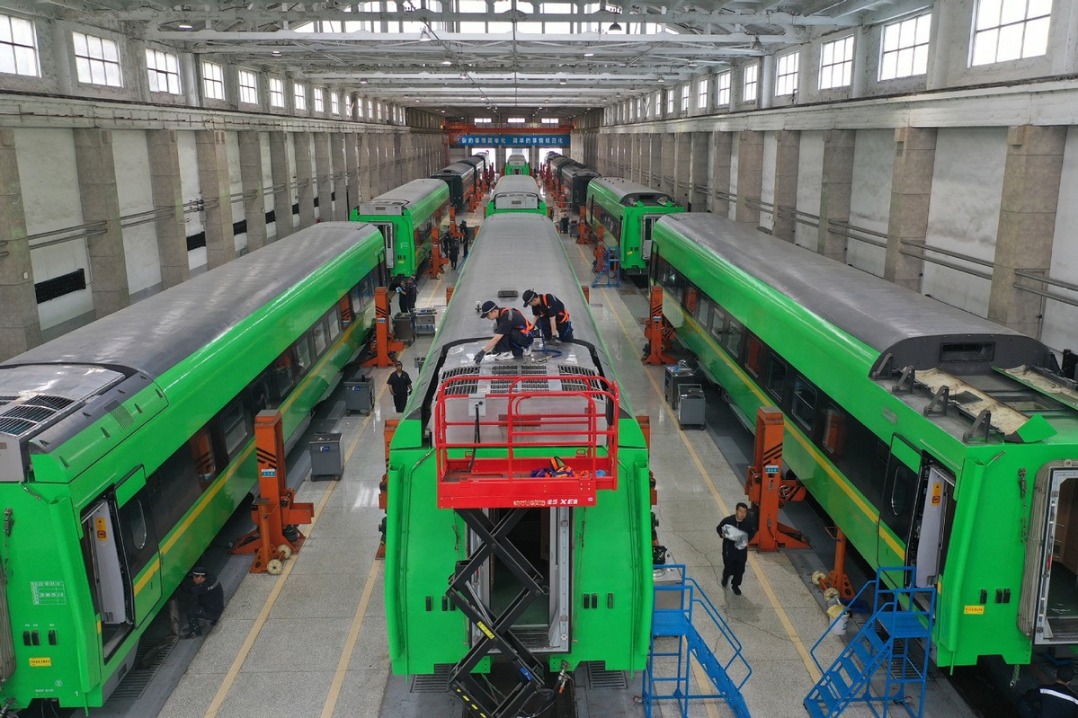Array could help solve cosmic puzzle

|

|
Editor's note: In the run-up to the 19th Communist Party of China National Congress, China Daily will cover a series of key projects and advanced equipment of national importance, showcasing the country's huge improvement and relentless efforts at innovation.
Observatory being built in Sichuan to discover what makes gamma rays tick
Imagine an explosion that can release 10 times the energy the sun radiates in its 10-billion-year life. It's called a hypernova, one of the brightest and most powerful stellar events.
Scientists suspect such an explosion would produce a large amount of cosmic rays, highly energetic particles blazing across the universe at close to the speed of light. These cosmic bullets pack so much energy they can cause electronics problems in satellites, planes and other devices on Earth after traveling for billions of years.
First discovered in 1912, cosmic rays continue to baffle scientists as to exactly where and how they are made. But China is spending more than 1.2 billion yuan ($176.53 million) to build the world's largest cosmic ray observatory for gamma ray astronomy to crack this mystery, and possibly to learn how to recreate the high-energy particles on Earth.
The installation is called Large High Altitude Air Shower Observatory-a 136-hectare telescope array spreading across Haizi Mountain in Daocheng county, Sichuan province. It consists of more than 6,300 detectors and 12 telescopes, and is located 4.4 kilometers above sea level, making it one of the highest cosmic ray observatories in the world.
Construction of the roads and basic groundwork around the observatory started last year, and work on the detectors is set to begin this year, said Li Kunpeng, the senior engineer for the project from the Chinese Academy of Sciences' Institute of High Energy Physics. By the end of next year, 25 percent of the observatory will be operational and able to receive data. The entire project is scheduled to be finished by about January 2021.
The observatory will be the world's most sensitive detector of ultrahigh-energy cosmic gamma rays carrying more than 10 trillion electron volts-a unit of energy-and is able to detect charged cosmic rays up to 10 quintillion (1 followed by 18 zeros) electron volts. This scale dwarfs the energy level from the sun's cosmic rays, which is typically measured in millions and up to billions, said Cao Zhen, the project's chief scientist.
"Ultrahigh-energy particles could be the remnants and messengers of major cosmic events that could have happened billions of years ago in distant galaxies," he said, adding that they are a million times stronger than the most energetic particle created by the world's most powerful particle accelerator, the Large Hadron Collider in Switzerland.
"By studying their origin and how they accelerate, we will have a better understanding of the early days of the universe, and, if possible, we can emulate their acceleration mechanism for research, leading to new discoveries beyond the limits of our current equipment," he said.
Such discoveries include new properties or laws in high-energy radiation, star formation, dark matter as well as other fundamental fields, Cao said. This can lead to new applications such as the new-generation gamma knife, in which highly energetic photon particles are used to kill brain tumors, or better materials to protect astronauts and electronics from cosmic rays.
Catching these space travelers is no simple task. Even if they reach the Earth, the atmosphere absorbs most of them. So the ideal method is to use satellites equipped with telescopes and detectors to intercept them in space, like NASA's Fermi Gamma-ray Space Telescope and China's Dark Matter Particle Explorer.
However, the more energy a particle has, the rarer it becomes. Some ultrahigh-energy particles occur only once a year within a 1-square-kilometer surface, Cao said.
As a result, it is more common and cost-efficient to lay out the massive detectors array-what scientists call a sky net-on mountains or below ground to reduce interference from air.
Similar installations are the Pierre Auger Observatory in Argentina, the IceCube Neutrino Observatory in Antarctica, which is under ice, the ARGO-YBJ International Observatory in the Tibetan Plateau, and later the planned Cherenkov Telescope Array.
"The LHAASO will complement these existing observatories, and will become an advanced platform for scientists around the world from astronomy to nanotechnology to work together in unraveling the mystery of the universe," said He Huihai, the project's chief technologist.
Scientists from France, Italy, Russia, Switzerland, Thailand and other countries will also collaborate in the project along with Chinese scientists from more than 20 institutions and universities, he added.
What makes the Large High Altitude Air Shower Observatory unique is its way of catching the cosmic rays. When a high-energy particle enters the atmosphere, it ionizes-sheds one or more electrons-and charges the molecules in the air, and the ionized molecules continue to bump into other molecules, he said.
After a dozen rounds, this creates a shower of secondary molecules spreading across a large area, "the LHAASO will catch parts of the shower within nanoseconds, analyze their data, and find the one particle that started it all", he added.
Once a particle is located, scientists can estimate the direction it came from and order telescopes to look in that area to see what happened.
Coupled with lightwave analysis and different types of telescopes, scientists can even deduce the chemical makeup of the situation and possibly figure out how the particles got so fast.
"Given its extreme difficulty, such a task is only possible through global effort," He said. "This is the best part of studying the cosmos, it unites scientists across nations and fields together under one purpose-to learn about the universe."
- Guideline aims to curb irregular cosmetic surgery pricing
- Committee formed in Guangzhou to guide the building of 'lake + green development zone'
- Shanghai Mint brings coins and medals to London
- Chinese customs seize over 40,000 fake Labubu toys
- Torrential rains cause flooding in Guangdong townships
- Xiamen artist captures fleeting wedding emotions on canvas





































